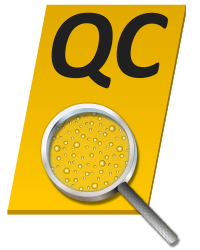FAA AC 150/5370-10G
By Donna Speidel

![]()
The most recent edition of the FAA Advisory Circular 150/5370-10 was released on July 21, 2014. The AC 5370-10G, Item P-620 "Runway and Taxiway Painting", has undergone extensive revision to include several quality control measures for new construction projects. I'm comfortable with most of these items being included in your specifications as they're written, with some exceptions. To hear about all of the changes, register for the RDU Symposium coming up fast, October 13-15 in Raleigh-Durham, NC.
 This series of articles will address each change in the guidance literature, its intent, and what the new language means to you. You may download your own
copy of Item P-620 from our website as a reference by clicking on the icon to the right. Be sure to
share this article with your Resident/Consulting Engineers, a lot of the new language falls into their purview.
This series of articles will address each change in the guidance literature, its intent, and what the new language means to you. You may download your own
copy of Item P-620 from our website as a reference by clicking on the icon to the right. Be sure to
share this article with your Resident/Consulting Engineers, a lot of the new language falls into their purview.
620-3.1 - Weather Limitations
1) Wind Speed
- What Changed - Added the following language: "Markings shall not be applied when the wind speed exceeds 10 mph unless windscreens are used to shroud the material guns".
- The Intent - To prevent material application to be adversely affected by windy conditions.
- What It Means To You - Since I have never been to an airport that isn't windy... it means you should expect your contractor to at least have a method of shrouding their material guns in the event the wind starts displacing glass beads. I don't care if they use cardboard and duct tape, as long as it results in uniform material distribution (this applies to all marking equipment).
2) Pavement Temperature
- What Changed - Modified the following optional language: "[ Markings shall not be applied when the pavement temperature is greater than 130°F (55°C) ]".
- The Intent - To allow the Engineer to define a threshold for surface temperatures during marking application.
- What It Means To You - The language used to state "Markings shall not be applied when the pavement temperature is greater than 120°F (49 °C)", and it was not optional. This is a bigger deal on a new asphalt project; due to its color, the temperature is affected more quickly than say, Portland cement. Anecdotally, our quality control technicians rarely see pavement temperatures get this high, although memories of projects in Dallas and Daytona Beach in July come to mind. The point is, the threshold is no longer absolute, however manufacturers commonly recommend 130°F as a threshold for waterborne paints.
 Weather isn't exactly something that we can control - we can barely predict it! However, it's important that painters understand the limitations, and most
do. Here are a few more "environmentals" we monitor/record when providing quality control for marking projects:
Weather isn't exactly something that we can control - we can barely predict it! However, it's important that painters understand the limitations, and most
do. Here are a few more "environmentals" we monitor/record when providing quality control for marking projects:
- Air Temperature
- Dew Point (particularly in the morning or when working overnight)
- Radar
Most of the time, weather is less than optimal for pavement marking. Admittedly, application on airports must sometimes occur during adverse conditions. The balance to be struck is painting when conditions are acceptable, perhaps not optimal. In my experience, the two most important things to monitor are your temperatures and wind speed. The markings will have a better chance of performing well if they are applied under acceptable, if not optimal, conditions.
There is a tremendous amount of new information, best practices, and technologies available relating to airport pavement markings. All of which will be incorporated into the RDU Airfield Marking Symposium designed to ramp you up quickly. Please join us in Raleigh-Durham October 13-15.

